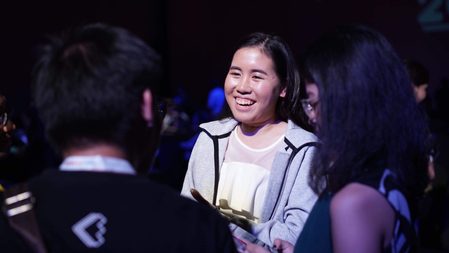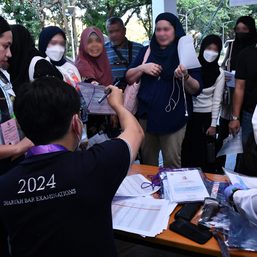SUMMARY
This is AI generated summarization, which may have errors. For context, always refer to the full article.

MANILA, Philippines – Women in Science, Technology, Engineering, and Mathematics (STEM) continue to be underrepresented in the Philippines, as only 36.3% or just a little over 3 in 10 of the workforce are women, data from LinkedIn found.
This makes the STEM gender gap in the Philippines the widest in the Asia Pacific region, according to LinkedIn. In non-STEM fields in the Philippines, women comprised the majority or 58.8% of the workforce, but only 36.3% in STEM.
Worldwide, the proportions are comparable, with women making up almost half or 49.3% of total employment across non-STEM occupations, and just 29.2% of all STEM workers.
The World Economic Forum’s (WEF) Global Gender Gap Report (GGGR) 2023 cited LinkedIn in measuring workforce gender gaps. In the 2023 GGGR, the Philippines generally improved in its gender equality efforts as the country ranked 16th among 146 countries. It placed 19th in 2022.
Discouraged to stay
The WEF said that while women graduates of STEM who enter the STEM workforce are increasing worldwide, “the numbers on the integration of STEM university graduates into the labor market show that the retention of women in STEM even one year after graduating sees a significant drop.”
This means that, while more women in STEM are graduating from STEM courses, they are not staying in the field.
In the Philippines, women comprised 4 out of 10 STEM graduates in 2017, but only slightly more than 3 of 10 were in the STEM workforce a year later, LinkedIn said in a release.
“The drop in representation between graduation and joining the workforce has been stable at around 11% from the 2017 graduating batch, but it spiked to 14% in 2021,” LinkedIn said.
Atul Harkisanka, head of emerging markets and Philippine country manager for LinkedIn, said that women tend to stay in STEM if they have role models to look up to.
“Organizations can create mentoring and training programs for women in STEM, where they can support women to stay in the workforce and further their careers, but also provide invaluable guidance and support networks, facilitating a path towards leadership roles through the influence of inspiring role models,” he said.
Harkisanka added that while actions are taken to close the gender gap, the country needs to go “further and faster to level the playing field.”
“Inclusive hiring practices, visibility of women in top jobs, and upskilling and career growth opportunities for women, particularly in high-growth and high-earning sectors like STEM, will help correct this worrying trend, but we need to act now,” he said.
In the GGGR, gender equality in the Philippine education system was almost found to be attained, with educational attainment at 99.9%. But while the country has almost reached parity in education, gender-related factors remain relevant to the pursuit of STEM, which is typically considered as “male-dominated.”
LinkedIn found that STEM gender gaps in the Asia Pacific region were also present in Australia, at 21%, and Singapore, at 15%. – Rappler.com
Add a comment
How does this make you feel?






![[OPINION] Unpaid care work by women is a public concern](https://www.rappler.com/tachyon/2024/07/20240725-unpaid-care-work-public-concern.jpg?resize=257%2C257&crop_strategy=attention)







There are no comments yet. Add your comment to start the conversation.